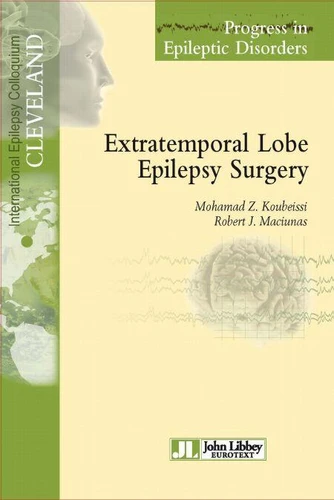Extratemporal Lobe Epilepsy Surgery. Volume 10.
Par : , ,Formats :
Actuellement indisponible
Cet article est actuellement indisponible, il ne peut pas être commandé sur notre site pour le moment. Nous vous invitons à vous inscrire à l'alerte disponibilité, vous recevrez un e-mail dès que cet ouvrage sera à nouveau disponible.
Disponible dans votre compte client Decitre ou Furet du Nord dès validation de votre commande. Le format Multi-format est :
- Pour les liseuses autres que Vivlio, vous devez utiliser le logiciel Adobe Digital Edition. Non compatible avec la lecture sur les liseuses Kindle, Remarkable et Sony
 , qui est-ce ?
, qui est-ce ?Notre partenaire de plateforme de lecture numérique où vous retrouverez l'ensemble de vos ebooks gratuitement
Pour en savoir plus sur nos ebooks, consultez notre aide en ligne ici
- Nombre de pages544
- FormatMulti-format
- ISBN978-2-7420-1183-4
- EAN9782742011834
- Date de parution22/09/2011
- Protection num.pas de protection
- Infos supplémentairesMulti-Format
- ÉditeurJohn Libbey Eurotext
Résumé
The theme of the Cleveland colloquium which took place in May 2010 was extratemporal lobe epilepsy surgery.
Patients with refractory extratemporal lobe epilepsy, particularly those in whom imaging examinations did not reveal any brain lesions, have a less positive prognosis after surgery than those with mesial temporal lobe epilepsy.
The semiology of seizures, the functional imaging techniques, neuropsychological evaluation and intracranial EEG are used to select surgical patients.
Moreover, a large number of centres have experimented with new methods for identifying the epileptogenic area in these patients. This work outlines diagnostic and prognostic tools available as well as epilepsy surgery. Written by international experts who attended the Cleveland colloquium, it will be all the more useful to neurologists, neurosurgeons and epileptologists as no other work until now has focused on this subject.
Moreover, a large number of centres have experimented with new methods for identifying the epileptogenic area in these patients. This work outlines diagnostic and prognostic tools available as well as epilepsy surgery. Written by international experts who attended the Cleveland colloquium, it will be all the more useful to neurologists, neurosurgeons and epileptologists as no other work until now has focused on this subject.
The theme of the Cleveland colloquium which took place in May 2010 was extratemporal lobe epilepsy surgery.
Patients with refractory extratemporal lobe epilepsy, particularly those in whom imaging examinations did not reveal any brain lesions, have a less positive prognosis after surgery than those with mesial temporal lobe epilepsy.
The semiology of seizures, the functional imaging techniques, neuropsychological evaluation and intracranial EEG are used to select surgical patients.
Moreover, a large number of centres have experimented with new methods for identifying the epileptogenic area in these patients. This work outlines diagnostic and prognostic tools available as well as epilepsy surgery. Written by international experts who attended the Cleveland colloquium, it will be all the more useful to neurologists, neurosurgeons and epileptologists as no other work until now has focused on this subject.
Moreover, a large number of centres have experimented with new methods for identifying the epileptogenic area in these patients. This work outlines diagnostic and prognostic tools available as well as epilepsy surgery. Written by international experts who attended the Cleveland colloquium, it will be all the more useful to neurologists, neurosurgeons and epileptologists as no other work until now has focused on this subject.




